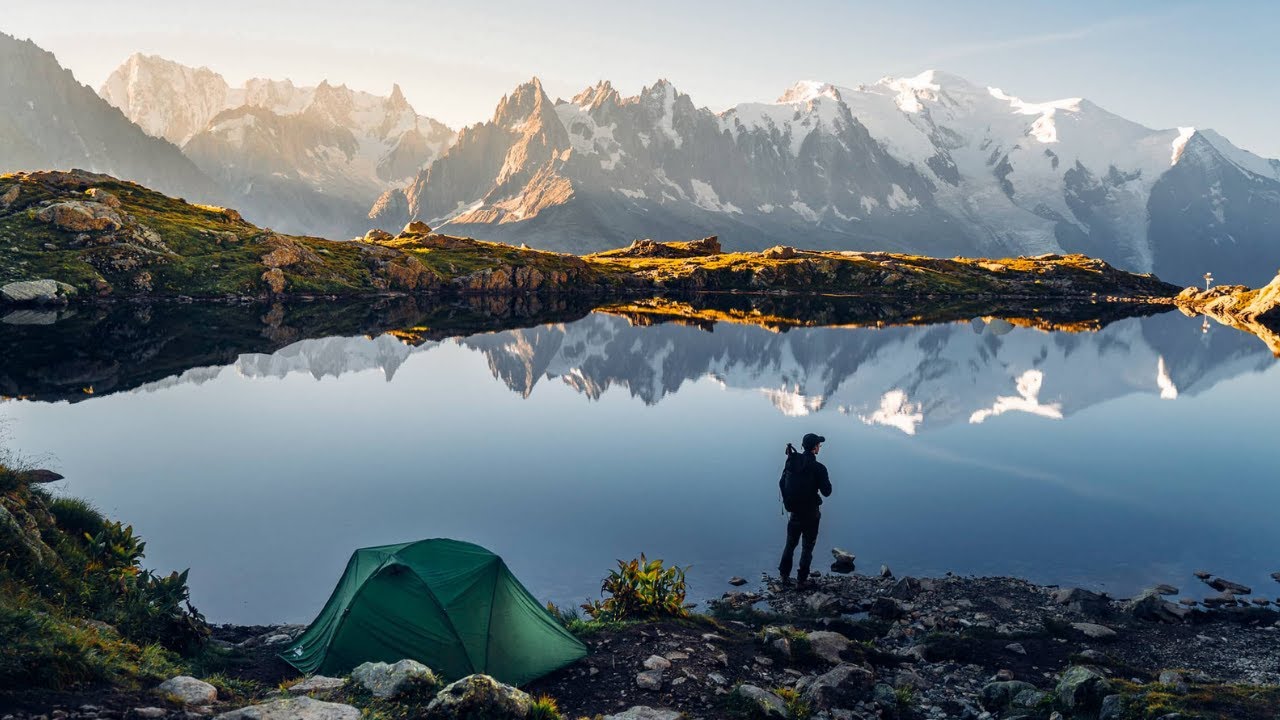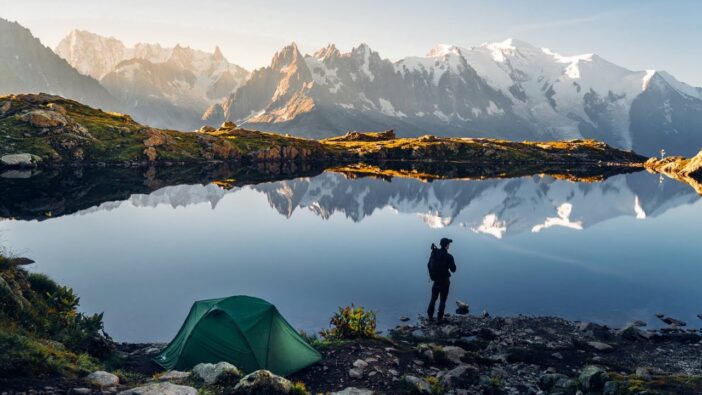Are you an avid hiker looking for your next adventure? Europe is a treasure trove of stunning hiking trails that cater to all skill levels, from beginners to seasoned mountaineers. In this comprehensive guide, we’ll explore ten of the most popular hikes in Europe, each offering a unique experience and a chance to connect with nature in remarkable ways.
1. Tour du Mont Blanc, France, Italy, and Switzerland
The Tour du Mont Blanc, often abbreviated as TMB, is one of Europe’s most iconic long-distance hikes. This trail takes you through France, Italy, and Switzerland, offering breathtaking views of the Mont Blanc massif, the highest peak in Western Europe. The entire loop covers approximately 170 kilometers (105 miles) and usually takes 10 to 15 days to complete, depending on your pace.
Route Details
The hike begins in the charming town of Chamonix, France, and follows a well-marked path that circumnavigates Mont Blanc. Along the way, you’ll traverse lush meadows, dense forests, and high mountain passes. Highlights include the picturesque villages of Courmayeur in Italy and Champex-Lac in Switzerland, where you can sample local cuisine and immerse yourself in the Alpine culture.
What to See
The Tour du Mont Blanc offers unrivaled views of the Mont Blanc massif, with its towering peaks and pristine glaciers. You’ll also encounter serene lakes, such as Lac Blanc, and have the opportunity to spot wildlife like ibex and chamois. The route is dotted with cozy mountain huts where you can rest and enjoy hearty meals.
How to Get There
The trail is easily accessible from Geneva International Airport, which is well-connected to major European cities. From Geneva, you can take a train or bus to Chamonix, the starting point of the hike.
Difficulty
While the Tour du Mont Blanc is not extremely technical, it is a demanding trek due to its length and elevation gain. Hikers should be in good physical condition and well-prepared for changing weather conditions.
2. Cinque Terre, Italy
The Cinque Terre is a collection of five charming fishing villages nestled along the rugged coastline of the Italian Riviera. This UNESCO World Heritage Site offers a delightful coastal hike with stunning vistas of the Mediterranean Sea. The total length of the trail is approximately 12 kilometers (7.5 miles), and it can be completed in a day.
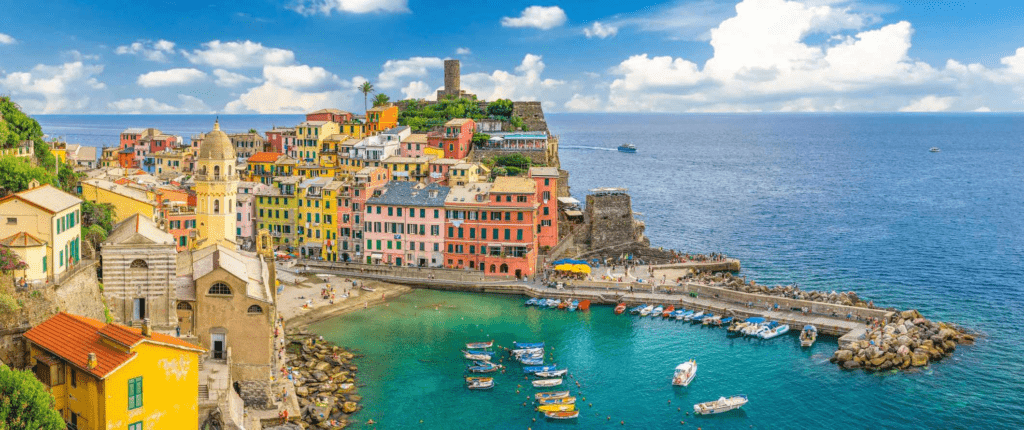
Route Details
Starting from the northernmost village of Monterosso al Mare, you’ll walk along a well-maintained path that connects all five villages: Vernazza, Corniglia, Manarola, and Riomaggiore. The trail winds through vineyards, olive groves, and terraced cliffs, providing enchanting panoramas of the colorful villages and the azure sea.
What to See
Each village along the Cinque Terre hike is a visual delight, boasting vibrant houses stacked atop each other and picturesque harbors. You can take a refreshing dip in the clear waters or indulge in freshly caught seafood at the local restaurants. The area is famous for its pesto, so be sure to try some with homemade pasta.
How to Get There
The nearest major city to Cinque Terre is La Spezia, which is well-connected by train to major Italian cities like Florence and Milan. From La Spezia, frequent trains and local transport services are available to reach Monterosso al Mare.
Difficulty
The Cinque Terre hike is relatively easy, suitable for hikers of all levels. It’s a perfect choice for a leisurely day of exploration.
3. The West Highland Way, Scotland
For those seeking a taste of the rugged beauty of the Scottish Highlands, the West Highland Way is a must-visit trail. This long-distance hike stretches for approximately 154 kilometers (96 miles), usually taking around 7 to 8 days to complete.
Route Details
The West Highland Way begins in Milngavie, a suburb of Glasgow, and winds its way northward through some of Scotland’s most spectacular scenery. Along the route, you’ll pass through dense forests, rolling moorlands, and tranquil lochs. The hike culminates at the foot of Britain’s highest peak, Ben Nevis, near the town of Fort William.
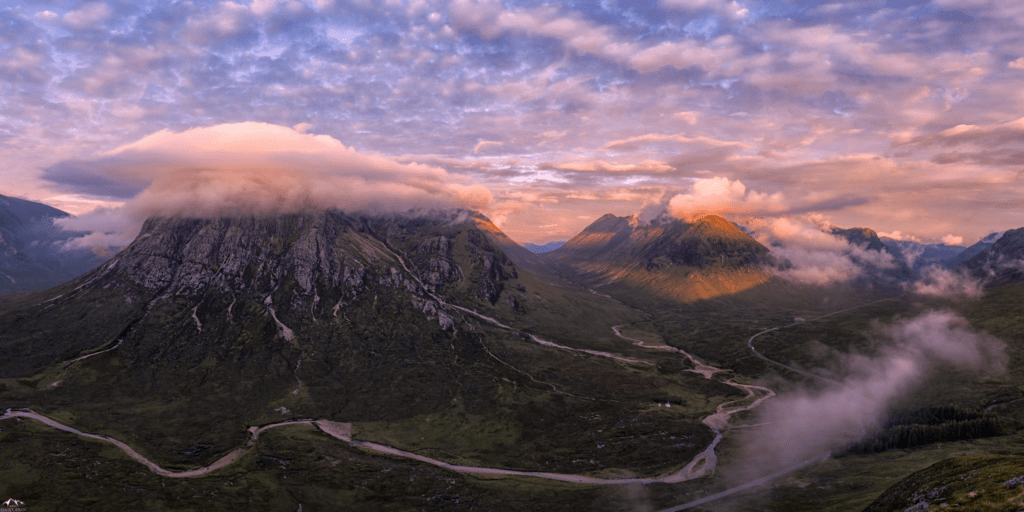
What to See
The West Highland Way offers a diverse range of landscapes, including the mysterious Rannoch Moor, the enchanting Loch Lomond, and the dramatic Devil’s Staircase. Wildlife enthusiasts may spot red deer, golden eagles, and otters. The route also features cozy inns and friendly villages where you can savor traditional Scottish fare and warm hospitality.
How to Get There
Glasgow International Airport is the closest major airport to Milngavie. From there, you can take a short train ride to the starting point. Alternatively, if you’re already in Glasgow, you can begin your journey right from Milngavie.
Difficulty
While the West Highland Way is not overly strenuous, it does involve some challenging terrain and variable weather. Hikers should be prepared for muddy paths and steep ascents.
4. The Camino de Santiago, Spain
The Camino de Santiago, also known as the Way of Saint James, is a renowned pilgrimage route that traverses Spain and ends at the Santiago de Compostela Cathedral in Galicia. This historic trail offers a profound spiritual experience and covers various routes, with the most popular being the Camino Frances.
Route Details
The Camino Frances starts in the French town of Saint-Jean-Pied-de-Port and stretches for approximately 800 kilometers (500 miles) across northern Spain. Along the way, pilgrims pass through picturesque villages, historic towns, and stunning landscapes, including the picturesque vineyards of La Rioja and the rugged terrain of the Pyrenees.
What to See
The Camino de Santiago is rich in cultural and religious significance. Pilgrims have the opportunity to visit centuries-old churches, monasteries, and charming hamlets. The camaraderie among fellow pilgrims is a unique aspect of this hike, as you share stories and experiences with people from around the world.
How to Get There
The closest major airport to the starting point in Saint-Jean-Pied-de-Port is Biarritz Airport in France. From there, you can take a train or bus to reach the town. Alternatively, if you’re already in Spain, you can easily join the trail at various points along the Camino Frances.
Difficulty
The Camino de Santiago is a long-distance pilgrimage that requires stamina and determination. The terrain varies from flat stretches to steep ascents and descents, so it’s essential to be physically prepared.
5. The Plitvice Lakes National Park, Croatia
If you prefer a hiking experience surrounded by pristine nature and crystal-clear lakes, the Plitvice Lakes National Park in Croatia should be on your list. This national park is renowned for its series of cascading lakes and waterfalls, creating a mesmerizing spectacle of natural beauty.
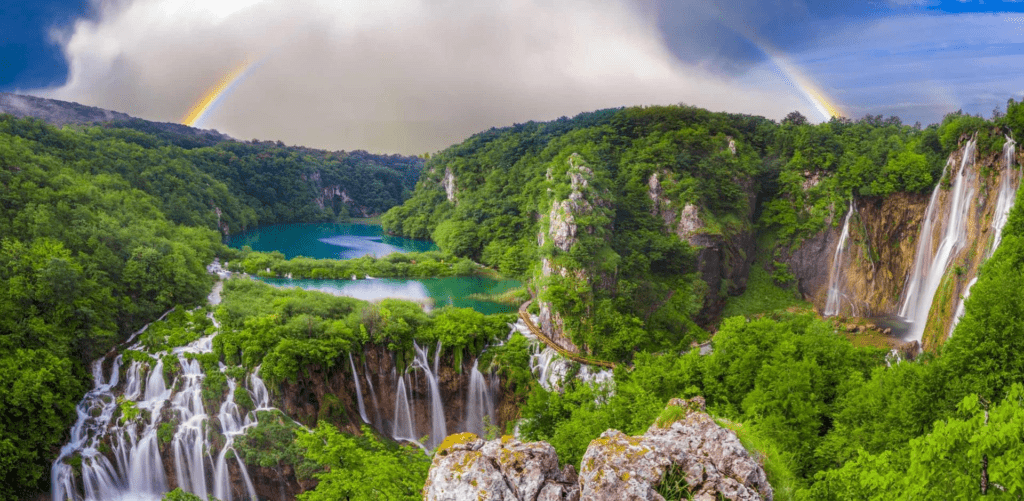
Route Details
The park offers a network of well-maintained trails that meander through lush forests and alongside the stunning lakes. The most popular route is the 8-kilometer (5-mile) circular trail that takes you past the park’s most famous waterfalls, including the Veliki Slap, the park’s tallest waterfall.
What to See
The Plitvice Lakes National Park is a UNESCO World Heritage Site, and for a good reason. Hikers can marvel at the emerald waters of the lakes and the vibrant greenery that surrounds them. The cascading waterfalls, some reaching heights of 78 meters (256 feet), are a sight to behold. Keep an eye out for the park’s wildlife, including deer, bears, and various bird species.
How to Get There
The nearest major city to the Plitvice Lakes National Park is Zagreb, the capital of Croatia. From Zagreb, you can take a bus to the park’s entrance. Alternatively, there are organized tours from Zagreb that include transportation to and from the park.
Difficulty
The trails in Plitvice Lakes National Park are relatively easy and suitable for all ages and fitness levels. The park provides an excellent opportunity for a day of leisurely exploration.
6. The Camino dos Faros, Spain
For a lesser-known but equally enchanting hike in Spain, the Camino dos Faros on the Galician coast offers a unique experience. This trail takes you through stunning coastal landscapes, quaint fishing villages, and a dramatic coastline reminiscent of Ireland.
Route Details
The Camino dos Faros, or “Lighthouse Way,” is a circular route that covers approximately 200 kilometers (124 miles). It typically takes around 8 to 10 days to complete, allowing you to savor the picturesque views and explore charming hamlets along the way.
What to See
The highlight of this hike is undoubtedly the rugged coastline, with its towering cliffs, hidden coves, and wild beauty. You’ll encounter several lighthouses along the path, each with its own unique character. The fishing villages of Malpica and Muxía offer opportunities to enjoy fresh seafood and immerse yourself in Galician culture.
How to Get There
The closest major airport to the starting point of the Camino dos Faros in Malpica is A Coruña Airport. From there, you can take a bus or taxi to reach Malpica. Alternatively, you can also join the trail at other points, such as Laxe or Muxía, which are accessible by public transport.
Difficulty
The Camino dos Faros is a moderate hike suitable for hikers with a reasonable level of fitness. It includes some challenging sections, particularly along the cliffs, so proper hiking gear is essential.
7. The Amalfi Coast Path, Italy
If you dream of hiking along the Mediterranean coast with stunning views of picturesque villages and turquoise waters, the Amalfi Coast Path in Italy is a dream come true. This scenic trail is approximately 50 kilometers (31 miles) long and can be completed in 3 to 4 days.

Route Details
The Amalfi Coast Path begins in the charming town of Sorrento and winds its way along the coastline, passing through iconic villages such as Positano, Amalfi, and Ravello. The path offers a mix of paved walkways, stone steps, and dirt trails, all with panoramic views of the sea and the rugged cliffs.
What to See
The Amalfi Coast is famous for its dramatic landscapes, quaint villages, and vibrant Mediterranean flora. You’ll have ample opportunities to explore the charming towns along the route, each offering its unique cultural and culinary delights. Don’t forget to taste limoncello, a local lemon liqueur.
How to Get There
The nearest major airport to Sorrento is Naples International Airport. From Naples, you can take a train or ferry to reach Sorrento, the starting point of the hike.
Difficulty
The Amalfi Coast Path is a moderate hike, but some sections can be steep and challenging. Proper footwear and a good level of fitness are recommended.
8. The Picos de Europa, Spain
For those in search of dramatic mountain landscapes and rugged terrain, the Picos de Europa in northern Spain offer an exhilarating hiking experience. This national park is known for its towering peaks, deep gorges, and pristine wilderness.
Route Details
The Picos de Europa offer a variety of hiking trails, catering to different skill levels. One of the most popular routes is the Ruta del Cares, which is a challenging 24-kilometer (15-mile) trail that follows the Cares River through a breathtaking gorge. For more experienced hikers, the ascent to the iconic Naranjo de Bulnes peak is a rewarding challenge.
What to See
The Picos de Europa are a haven for nature enthusiasts. Along the trails, you can spot eagles, vultures, and chamois. The Ruta del Cares provides jaw-dropping views of the narrow gorge and the river below. If you venture to the Fuente Dé cable car, you can access higher elevations for even more breathtaking vistas.
How to Get There
The nearest major airport to the Picos de Europa is Asturias Airport in Oviedo. From there, you can rent a car or take public transport to reach the park. Towns like Potes and Cangas de Onís are excellent bases for exploring the area.
Difficulty
The difficulty of hiking in the Picos de Europa varies depending on the chosen route. The Ruta del Cares is challenging due to its length and steep sections, while other trails may be more suitable for beginners.
9. The Fjällräven Classic, Sweden
For an adventure into the pristine wilderness of Sweden’s Lapland region, the Fjällräven Classic is an annual trek that draws hikers from around the world. This challenging hike covers a distance of approximately 110 kilometers (68 miles) and typically takes 4 to 7 days to complete.
Route Details
The Fjällräven Classic follows a well-established trail that winds through the Arctic wilderness of northern Sweden. You’ll encounter diverse landscapes, including dense forests, mountain plateaus, and serene lakes. The hike starts in Nikkaluokta and finishes in Abisko, both accessible by public transport.
What to See
This hike offers a unique opportunity to immerse yourself in the Arctic environment. You’ll traverse the stunning Abisko National Park, known for its pristine beauty and the northern lights during the winter months. The route also takes you past the iconic Kungsleden (King’s Trail) and the peaceful Tjäktja Pass.
How to Get There
The closest major airport to the starting point in Nikkaluokta is Kiruna Airport in Kiruna, Sweden. You can reach Kiruna by taking a domestic flight from Stockholm or other major Swedish cities. From Kiruna, you can use public transportation or arrange a transfer to Nikkaluokta.
Difficulty
The Fjällräven Classic is a challenging hike that requires proper preparation. The trail includes remote sections where you’ll need to carry your own gear, and weather conditions can be unpredictable, even in the summer. Hikers should have prior experience with multi-day treks and be prepared for varying terrain and temperatures.
10. The Julian Alps, Slovenia
The Julian Alps in Slovenia offer a hidden gem for hikers seeking alpine beauty without the crowds of other European destinations. This mountain range boasts pristine landscapes, crystal-clear lakes, and charming villages.
Route Details
One of the most popular hiking routes in the Julian Alps is the trek to Triglav, Slovenia’s highest peak. This challenging hike covers approximately 15 kilometers (9 miles) to the summit and back, typically taking a full day. The trail is well-marked and offers stunning vistas throughout.
What to See
The Julian Alps are a paradise for outdoor enthusiasts. Along the hike to Triglav, you’ll pass the exquisite Triglav Lakes Valley, a series of glacial lakes surrounded by towering peaks. The final ascent to the summit rewards you with panoramic views of the entire region. Don’t forget to explore charming towns like Bled and Bohinj, which offer their unique charm and activities.
How to Get There
The nearest major airport to the Julian Alps is Ljubljana Jože Pučnik Airport. From the capital city of Ljubljana, you can take a bus or rent a car to reach the Alps. Bled and Bohinj are excellent starting points for exploring the region.
Difficulty
The hike to Triglav is considered challenging due to its steep sections and elevation gain. Hikers should be in good physical shape and have appropriate gear for alpine conditions.
10 Amazing Hikes in Europe
Europe offers a diverse range of hiking experiences, from coastal paths and rolling hills to rugged mountains and pristine wilderness. Whether you’re a seasoned hiker or a novice explorer, these ten hikes offer something for everyone. From the iconic Tour du Mont Blanc to the remote beauty of the Fjällräven Classic, each trail promises a memorable journey through Europe’s natural wonders.
So, lace up your hiking boots, pack your backpack, and embark on an adventure that will not only challenge you physically but also reward you with breathtaking views, cultural experiences, and a deep connection with the great outdoors. Europe’s most popular hikes are waiting for you to explore, so start planning your next hiking adventure today.
